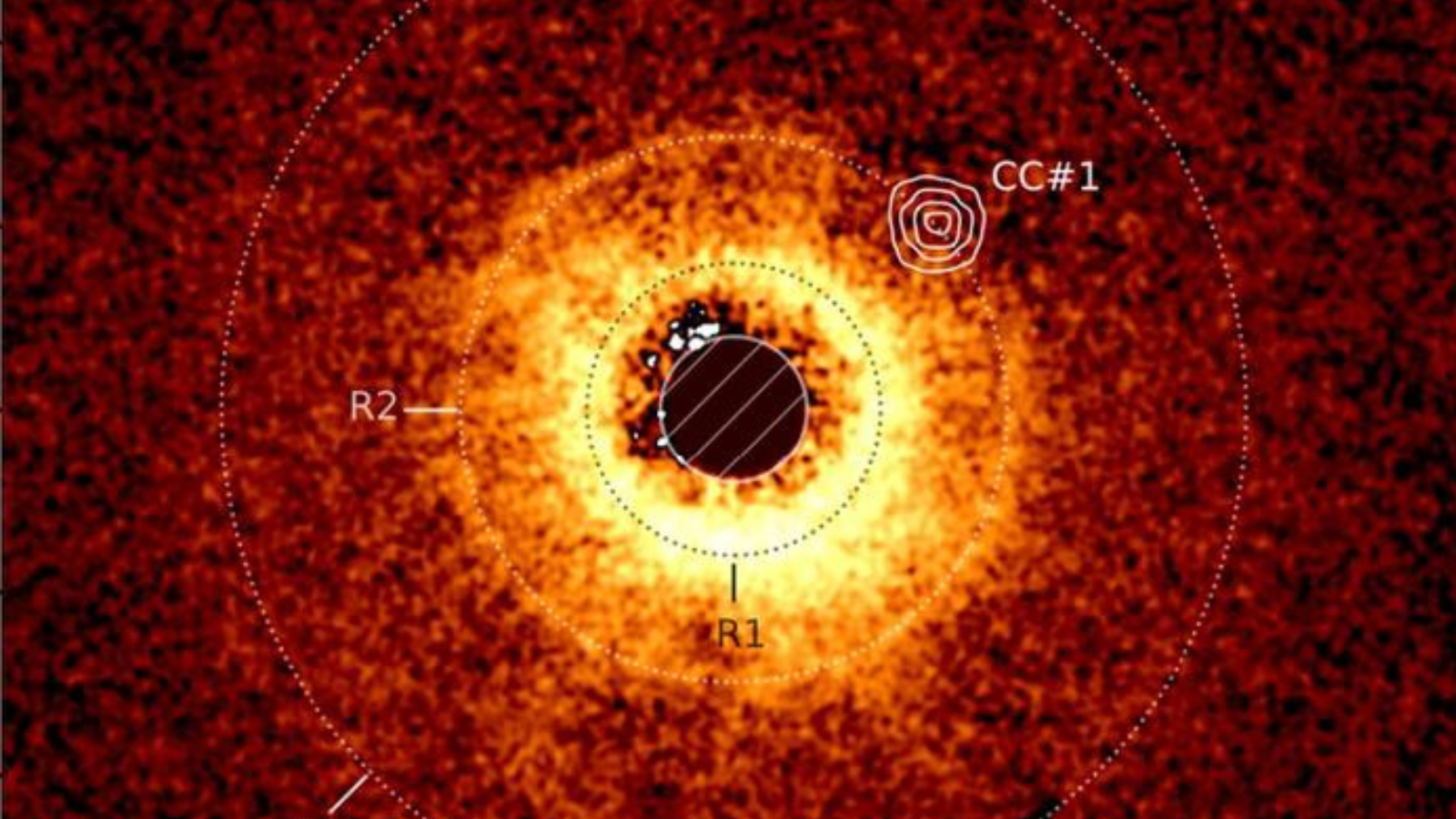The faintest star system orbiting our Milky Way may be dominated by dark matter
"This discovery may challenge our understanding of galaxy formation and perhaps even the definition of a 'galaxy.'"

A bizarre system of stars that is either an ancient cluster or the most dark-matter-dominated dwarf galaxy ever found is enticing astronomers who hope it could help explain how our Milky Way galaxy formed.
Discovered to lie 30,000 light-years away by astronomers at the University of Victoria in Canada and Yale University in the United States, the system, known as Ursa Major III/Unions 1 (UMa3/U1), contains only 60 visible stars amounting to just 16 times the mass of our sun and spanning an area only 10 light-years across.
The name of this strange system is an indication of how uncertain astronomers are about its nature. Typically, dwarf galaxies that orbit the Milky Way are named after the constellation in which they are found, in this case Ursa Major, the Great Bear. Meanwhile, faint star clusters are named after the project that discovered them, in this case the Ultraviolet Near Infrared Optical Northern Survey (UNIONS) that is being conducted by the Canada-France-Hawaii Telescope (CFHT) on Mauna Kea on Hawaii's Big Island, and the Panoramic Survey Telescope and Rapid Response System (Pan-STARRs) atop Haleakalā on the neighboring Hawaiian island of Maui.
"The fact that the system appears intact leads to two equally interesting possibilities," Will Cerny, a Yale grad student who is an author of a study describing the system, said in a press statement. "Either UMa3/U1 is a tiny galaxy stabilized by large amounts of dark matter, or it's a star cluster we've observed at a very special time before its imminent demise."
Related: What is dark matter?
If UMa3/U1 is a dwarf galaxy, it could be key to answering some big questions about how the Milky Way formed. According to the standard model of cosmology, galaxy formation is a hierarchical process, with halos of dark matter containing dwarf galaxies merging to form larger galaxies. This is an ongoing process, and according to theory there should still be several hundred dwarf galaxies swarming around our galaxy. However, only about 50 have been found so far, puzzling astronomers as to the whereabouts of the missing dwarfs.
Some of those 50 galaxies are referred to as ultra faint dwarfs, or UFDs, and contain a few thousand stars amidst a dense halo of dark matter. However, UMa3/U1 contains 15 times less mass than the next faintest UDF known, so if it is a dwarf galaxy then it indicates that the missing galaxies could be exactly where we would expect them to be, but contain too few stars to have been noticed.
Breaking space news, the latest updates on rocket launches, skywatching events and more!
"We're very excited that this object could be the tip of the iceberg — that it could be the first example of a new class of extremely faint stellar systems that have eluded detection until now," said Cerny.
The team, led by another grad student, Simon Smith at the University of Victoria, believe UMa3/U1 to be a dwarf galaxy and not a simple star cluster because of what follow-up observations with the Deep Imaging Multi-Object Spectrograph (DEIMOS) instrument at the W. M. Keck Observatory, also on Mauna Kea, tell us. DEIMOS measured the velocities of UMa3/U1's stars, finding that their velocity dispersion — the range between the slowest- and fastest-moving stars — strongly suggests that they are being held in place by a dense halo of dark matter. If this is the case, then it means that UMa3/U1 has one of the highest ratios of dark matter to visible matter known.
But why so few stars? Early in its history, UMa3/U1 may have experienced a brief starburst phase — a rapid and frenzied period of star formation. Ultraviolet radiation from luminous, massive stars that formed in this burst, and the shockwaves of their supernova explosions when they died, could have blown away the remaining star-forming gas, the weak gravity of the small galaxy not strong enough to hold onto it. In other words, UMa3/U1's own stars may have sabotaged the birth of any successive generations. Today, all that remain are 60 of the faintest, lowest-mass but longest-lived stars that form during that ancient starburst.
"UMa3/U1 had escaped detection until now due to its extremely low luminosity," said Smith. "This discovery may challenge our understanding of galaxy formation and perhaps even the definition of a 'galaxy.'"
The new findings were published in January in The Astrophysical Journal (ApJ). A second paper describing the implications of UMa3/U1 for galaxy formation has been accepted for publication in ApJ, and a preprint can be found here.
Join our Space Forums to keep talking space on the latest missions, night sky and more! And if you have a news tip, correction or comment, let us know at: community@space.com.

Keith Cooper is a freelance science journalist and editor in the United Kingdom, and has a degree in physics and astrophysics from the University of Manchester. He's the author of "The Contact Paradox: Challenging Our Assumptions in the Search for Extraterrestrial Intelligence" (Bloomsbury Sigma, 2020) and has written articles on astronomy, space, physics and astrobiology for a multitude of magazines and websites.
-
Questioner I think they should look for a black hole(s) at its center,Reply
not for the BH's 'standard' mass, but for the additional/secondary extended mass curves i believe BHs have/create,
that are currently being attributed to hypothesized, ever elusive DM. -
Questioner My hypothesized secondary mass curve from black holes would be flat/thin but extend extremely/tremendously far out from black holes.Reply
That would be why it's not an obvious artifact of black holes,
but would explain the tight correlation between galactic central black hole sizes and the hypothesized quantity of DM for their respective galaxies.
